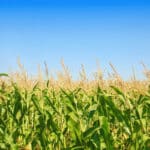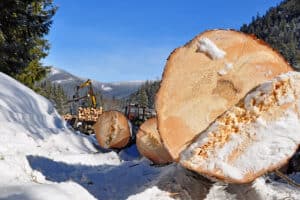Country property means dirt, or, if you prefer, soils.
Most buyers visiting a rural property for the first time look at the view, setting and house—more or less in that order.
Next time, start with the dirt.
Soil qualities will largely determine what an owner can and cannot do with the property, from which crops and trees will grow best where, to the suitability of particular soils for septic-system drain fields and the ability of soil in a particular spot to support house construction.
Soil information is found in the county’s Soil Survey, a publication of the USDA’s Natural Resources Conservation Service (NRCS) whose portal is soils.usda.gov. Click on “List of Published Soil Surveys” to go to county information via each state.
Print surveys are usually available from NRCS field service centers, which can be found at http://offices.sc.egov.usda.gov/locator/app. I’ve found print easier to use than online versions, but I am 61 and prefer old manual typewriters that ding to computers that don’t.
Some 2,300 surveys—covering most of America’s counties–are available.
Each survey includes soil maps that show the location of each soil type throughout the county.
Every soil type is classified according to steepness, rockiness, engineering properties (depth, texture, plasticity), physical and chemical properties (clay, density, permeability, water capacity) soil and water features (runoff estimates, flooding, high water table) and productivity for agriculture, trees and wildlife.
Why does this help a buyer? Before submitting a contract, a buyer can determine:
- Septic absorption. Is there dirt near a house site that’s likely to pass the county’s current drain-field test, either percolation or soil color? Would the drain field at an existing house pass the current test? If the dirt won’t “perc,” the cost of installing a septic system rises from about $4,000 to about $20,000. For old septic tanks, buyers may need to have them inspected to determine if repair is required.
- Construction uses. Are there soils on the property that can be used for roadfill, sand, gravel or topsoil?
- Water management. Is there a spot where the soil is suitable for a pond?
- Flooding. What is the frequency of flooding on a particular soil?
- Wetlands. Where are they?
- Water table? Is the water table too high for what you plan?
- Bedrock? How deep and how hard?
- Agricultural productivity. How much corn, oats, wheat and hay can each soil produce?
- Timber. Which soils grow trees the fastest and where are they?
- Buildings. Which soils are suitable for dwellings with and without basements; which can be used for roads?
- Wildlife habitat. Which soils support what?
If the NRCS office is no longer distributing print copies, photocopies of the particular map you want can be made. The local library, county extension agent, and Farm Service Agency office should have complete copies.
Soil surveys are more than dirt-cheap–they’re free.
This content may not be used or reproduced in any manner whatsoever, in part or in whole, without written permission of LANDTHINK. Use of this content without permission is a violation of federal copyright law. The articles, posts, comments, opinions and information provided by LANDTHINK are for informational and research purposes only and DOES NOT substitute or coincide with the advice of an attorney, accountant, real estate broker or any other licensed real estate professional. LANDTHINK strongly advises visitors and readers to seek their own professional guidance and advice related to buying, investing in or selling real estate.









Add Comment